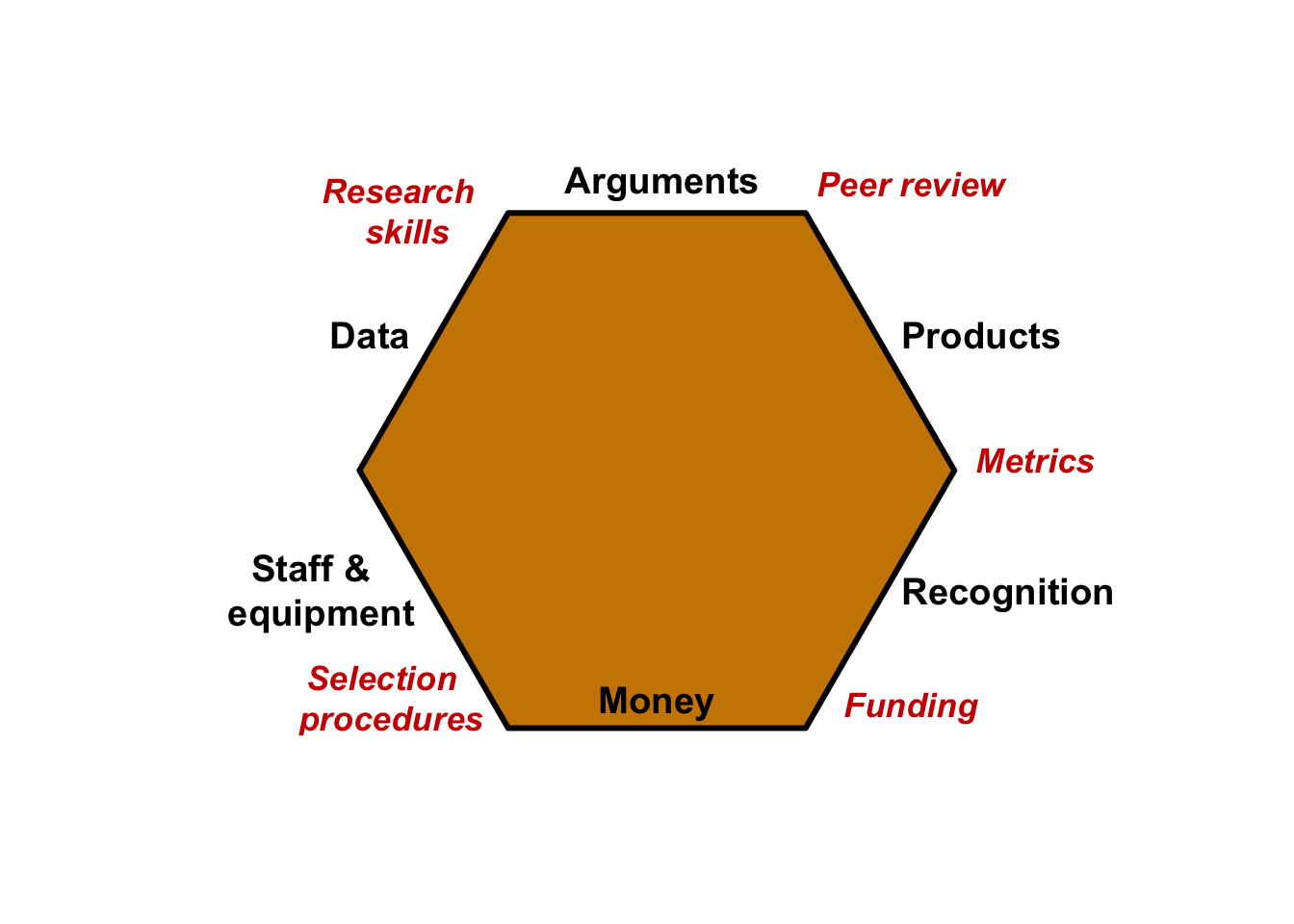1.1 The credibility of Science
The academic/research career runs in parallel with a cycle of credibility in which trust and reliability are sought (Miedema, 2022) (Figure 1.1).
To conduct any research project, we need staff (at least, one researcher) and equipment. Then, we need to design a research proposal and collect data. The data needs to be properly analyzed, requiring a set of research skills that enabled researchers to design the research proposal first, to collect data ensuring proper levels of quality and rigor, and the necessary skills to describe, model, visualize, and interpret the findings. The findings are supported by arguments (some of them are theoretical, whereas others are methodological) and often presented as a manuscript or research report. However, to publish those manuscripts and research reports, researchers need to demonstrate appropriate and highly valued research skills (e.g., deep knowledge of the theoretical approaches and literature review, critical evaluation skills, understanding of the methods and data analytical techniques used), not only to create those products for internal consumption, but to be accepted by the scientific community after passing the judgment of senior and experts peers (the peer-review system).
Once the products of our research are published, different metrics are used to provide the context of the quality of the research process. Metrics such as the Journal Citation Report impact factors, H-index, Google Scholar metrics, or Altmetrics are used for recognition and are a proxy to secure or increase the chances to secure funding, a good research/academic job, promotions, or to accrue more equipment and staff (e.g., research associates, post-docs, PhD students).

Figure 1.1: The credibility cycle